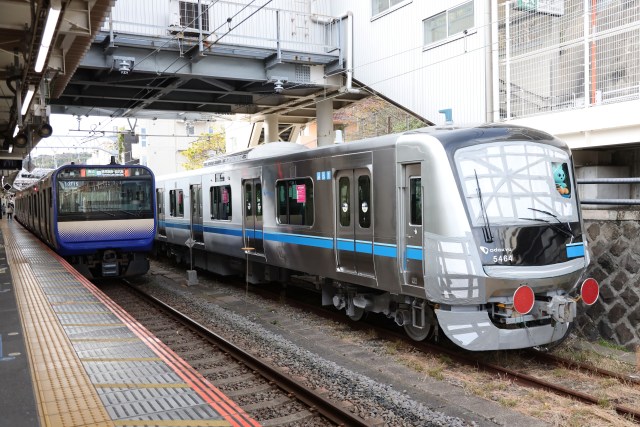Following the “Merry Christmas” tramcar on the Toei Arakawa Line, I’d like to introduce another festive train running in Tokyo today.
Keio Electric Railway put a special Christmas plate on one of their trains during the holiday season. Please take a look at the photos. This is Set 1729 of the EMU 1000 series. Set 1729 is a rather rare train on the Inokashira Line. It features a distinctive white front mask and a rainbow-colored stripe along its sides. The set was built by Tokyu Sharyo in 2009. Its original front color was bluish green, but it was changed to white in 2012 to serve as a flagship train on the line. The train also displays beautifully designed posters featuring scenic spots along the route, such as Inokashira Park and the Kanda River.
When I saw the rounded Christmas plate on the front the other day, I felt excited about enjoying this year’s festive atmosphere. I then tried to photograph the train at my favorite railway crossing near Higashi-Matsubara station, where we can enjoy good forward lighting in the afternoon.
Incidentally, the Inokashira Line is Keio’s short commuter route connecting Shibuya and Kichijoji. The 12.7-kilometer line has 1,067-millimeter gauge double tracks and is electrified at 1,500 V DC. The EMU 1000 series is the only model operated on the line. Commercial service for this series began in 1996 as the first 20-meter-long car type on the route.







































